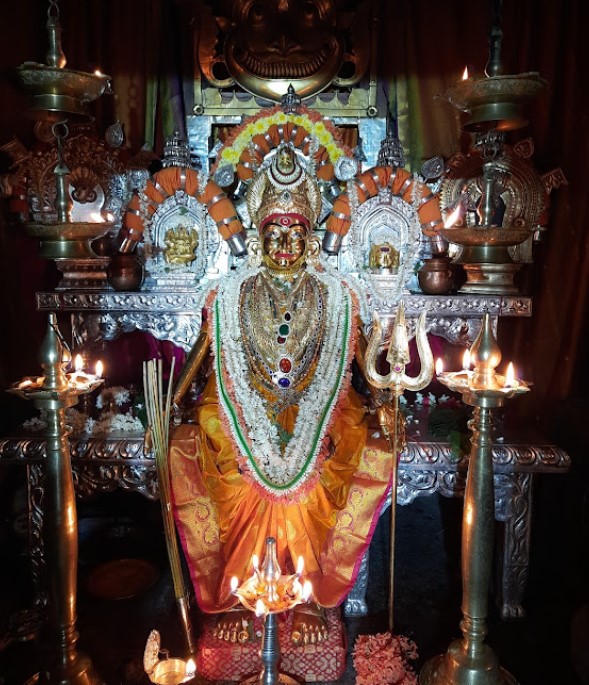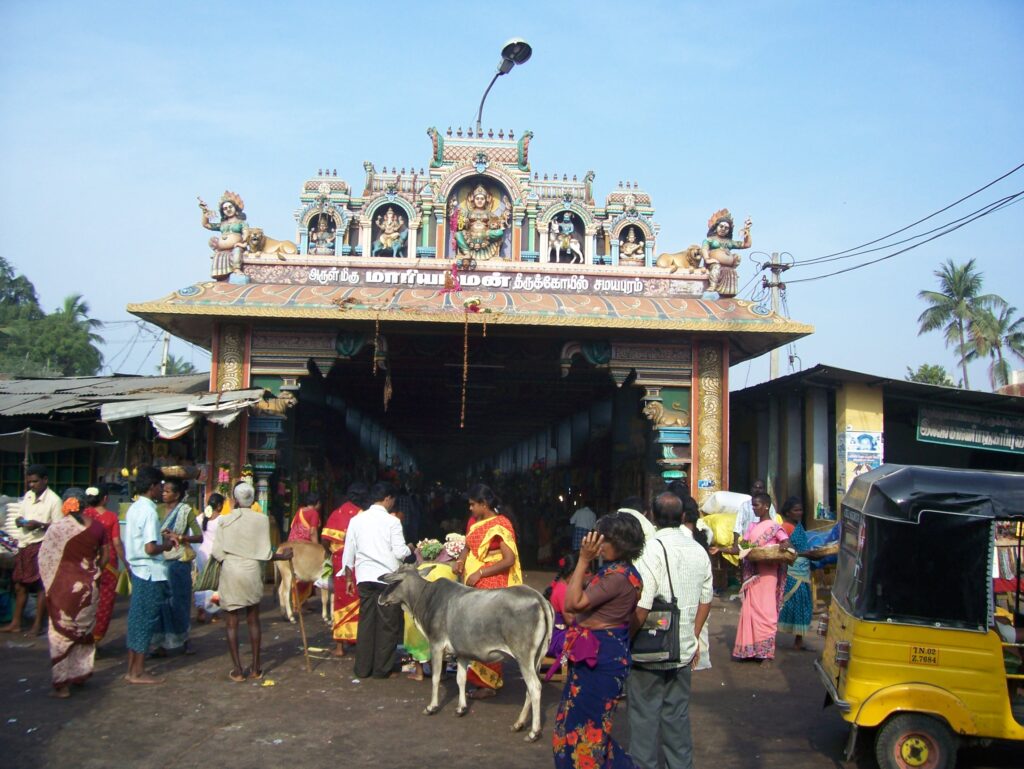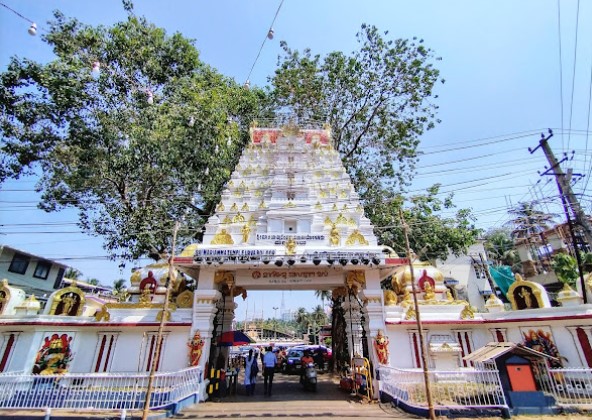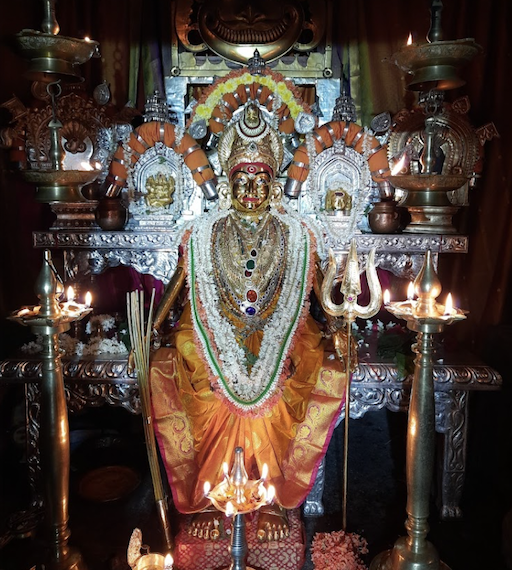
Mariyamma Temple: India is one of the most diversified countries with respect to cultures and religious values that have been able to harbor so many temples featuring devotion, grand architecture, and ancient culture. Among them all, perhaps one can say that the Mariyamma Temple is a place where, one way or another, one finds sacred beliefs and healing. Dedicated to Goddess Mariyamma, the presiding deity whose miraculous healing powers and nurturing nature have always been held in veneration, the temple promises to give profound spiritual experience. Let us discuss its fascinating history, interesting architecture, and some traditions that made it an essential part of society.
History
Goddess Mariyamma, or Mariamman, is one of the most revered goddesses in South Indian traditions, for she is the goddess of rain, fertility, and health. Their temples are rich in stories drenched in folklore and deep-rooted faith.
A very beautiful legend is associated with the birth of Mariyamma Temple. According to this, a goddess had come in a dream to the elderly man of that village and let him know how her idol could be located. Due to that reason, the said place was excavated, from where the idols themselves began giving divine energy, and since then, a temple was constructed at the same place. Within no time, it becomes the center for worship and miracles.
Architectural Beauty
Mariyamma Temple is a bright epitome of artistic excellence that reflects the magnificence of the Dravidian architecture boasting carvings and big buildings. The temple entrance sports a bright gopuram where detailed representations of mythological scenes and heavenly characters precede the architectural beauty into the spirit’s path.
Inside the temple, the sanctum sanctorum contains the idol of Goddess Mariyamma. She is always serene yet powerful with a trident in her hand and symbols of protection and fertility scattered all around. The following aspects are found within the grounds of the temple also.
- Dwajasthambam (Flagpole): That is a gold-coated pole used to depict interdependence between a mortal and divinity.
- Pushkarini (Temple Tank): Holy water reservoirs in which the devotees purify themselves by bathing in this water.
Mandapas (Halls): The beautifully constructed halls where ritual ceremonies, prayers, and other congregation take place.
Ritual and Worship Practices
The rituals that take place in the Mariyamma Temple are exquisite in terms of magnitude, with thousands of devotees coming together in massive festivals. The worship ceremonies that take place here reflect significant thankfulness and reverend regard for the goddess.
Daily Worship
- Morning Abhishekam: The deity is bathed ritually with sacred material made up of water, milk, turmeric, and paste of sandalwood. Later, the deity is adorned with colourful flowers.
- Naivedyam Offering: The traditional offering made is pongal, coconuts, and jaggery offered to the goddess.
- Evening Aarti: The temple reverberates with rhythmic chanting of prayers and flickering lights, creating a divine energy around.
Festivals
- Aadi Celebrations: For the entire month of Aadi in the Tamil calendar, this temple is abuzz with devotional activities and special rituals accompanied by colorful processions.
- Panguni Uthiram: A great festival for fulfilling vows through kavadis-carrying of decorated arches-and acts of penance.
- Firewalking Ceremony: A great ceremony that involves walk barefoot on burning embers as a test of one’s faith and devotion.
Goddess Mariyamma is mainly worshipped for the cure of diseases, especially diseases like smallpox and other skin infections. The merciful energy that she provides to her followers gives them relief and protection. Countless miraculous cures are seen in the temple premises as people have testified to their recovery after taking her blessings.
Neem and turmeric are the leaves and lime is considered sacred in front of the goddess. So these are given to the participants as prasadam. Some energy of the goddess merges with these to protect and heal both spiritually at one’s home.
The Mariyamma Temples are not only centers of worship but also social and cultural activity centers. They have free meal programs called annadanam, community events, and many more things that give the people a spirit of unity and service.
Festivals at the temple are indeed a wonder to look at which gathers people of different walks of life. Folk dances and music, and art forms make up part of these festivals that reflect on the culture of the place. It preserves this so that the temple becomes heritage to the people.
Getting Ready for Your Visit
It is a spiritual visit but also a great opportunity to soak in local culture and hospitality. Here’s how you can maximize your visit to the Mariyamma Temple:
- Best Time: Visit in early mornings or evening to absorb the peaceful surroundings and participate in the rituals.
- Appropriate Dress Code: Dress modestly, donning traditional attires, as a gesture of respect to the sacred environment.
- Engage Fully in the rituals and ceremonies for one to experience spiritual energy from the temple.
- Take time to look at other places within reach like markets and indigenous foods for an immersion of the culture.
Conclusion
The Mariyamma Temple is a place of spirituality, history, and cultural richness all woven together beautifully in the very heart of its precincts. Here, the devotees will be able to connect to the divine, find a haven, and a place of belonging. For a traveller, this opens up a gateway to grasping the profound traditions and faith that characterize South India.
Whether you are a pilgrim or a curious explorer, this Mariyamma Temple has all the makings of a journey full of faith, discovery, and inspiration. So write it down as one of the places you will visit so you won’t miss a glimpse of this shrine magic.
Discovery of the Divine: Mariyamma Temple—an Epitaph to Devotion and Culture
It is said that India is that place known as the country where there are huge cultural differences. And amidst all the temples bearing testimony to devotion, architectural grandeur, and ancient tradition, many sacred temples dot this very land. One such sacred destination is the Mariyamma Temple, which is a haven for faith and healing. Dedicated to Goddess Mariyamma, this temple is worshiped for the gifts of nourishment as well as miraculous healing abilities. Let us tell more about the interesting history, architecture of captivating beauty, and the traditions surrounding it for it is very much alive for the community today.
History Unveiled
Goddess Mariyamma, or Mariamman is the rain god, of fertility, and of health in South Indian context and folklores rich in faith infuse a story into a tale of temple dedicated to this god.

The origins of the Mariyamma Temple have been closely connected to a magnificent legend. There was a very divine vision said to have come upon a village elder, by which the goddess revealed the presence of her idol. She showed the villagers that it was at the site where this idol was uncovered. It glowed with the power of God, and due to this incident, the place soon became the abode for the temple as well as spirituality and miracles.
Architectural Grandeur (Mariyamma Temple)
The Mariyamma Temple exemplifies the peak of excellence in carvings and building in the Dravidian style. The entrance boasts of the brilliant gopuram with vividly painted characters of mythological and heavenly figures heralding one’s entrance to a sacred pilgrimage. Such architectural grandeur comes to a worshipper entering for his pilgrimage.
Inside the temple, sanctum sanctorum of Goddess Mariyamma remains. Her idol is often engraved as a soft expression yet austere; she holds a trident with motifs of protection and fertility all over her. There are the following on the premises of the temple:
- The Flagpole (Dwajasthambam): A gold-plated pole stands very high, reflecting a bond between the human world and the sacred.
- Pushkarini (Temple Tank): Sacred waters; it is believed that waters in this tank purify the devotees.
- Mandapas (Halls): Beautiful halls where rituals, prayers, and social functions are performed.
Rituals and Worship Practices
Complex rituals and grand festivals attract thousands of devotees to the temple. The practices of worship also depict the high respect and thanksgiving to the goddess.
Daily Worship
- Morning Abhishekam: The puja utilizes holy liquids of water, milk, turmeric, and pasted sandalwood as it bathes the deity, and later adorns it with colorful flowers in the whole backdrop.
- Naivedyam Prayers: The devotees offer grains of rice, coconut, and jaggery as offered as per the tradition.
- **Evening Aarti: The divine environment is kept and generated across this place with all resonant and echoing melodies of hymns and shining bright lamps lit everywhere throughout.
Festivals
- Aadi Celebrations: During the Tamil month of Aadi, the temple erupts in fanaticism and devotion as numerous rituals and processions take place.
- Panguni Uthiram: With regal splendor to back them up, devotees complete their devotions carrying kavadis or decoratively shaped arched structures on their shoulders, or perform any other form of atonement.
- Firewalk Ceremony: In this spectacular celebration of faith, one walks on burning embers barefoot.
Miracles and Healing Powers
Goddess Mariyamma is primarily revered as the remover of all types of diseases, including especially diseases such as smallpox and other kinds of skin disease. The energy of mercy which flows from her comforts and consoles her devotees. Miraculous occurrences fill the temple in which, under the blessings of the deity, the devotees are miraculously healed.
Neem leaves, turmeric, and lime-the sacred ingredients are offered at the temple. All these items, later given as prasadam, are carried back home, empowered with the energy of the goddess, and are kept to protect and heal the devotee from evil spirits.
They are not just temples, but these temples are social and cultural centers that carry out religious or social events in the form of annadanam, a free meal programme; community congregations, among others, designed to demonstrate unity and service.
Temple festivals are a colorful affair since they bring on board different kinds of people. Add to that more flavors are brought by folk dances, traditional music, and the art forms – all of them present the regional cultural heritage of the region. The role played by the temple makes it a strong part of heritage in the community.
Preparations for Your Visit
A visit to the Mariyamma Temple is a spiritual journey and an experience in local traditions and hospitality. Here’s how you can make the most of your experience:
- Ideal Timing: Visit during early mornings or evenings to enjoy the tranquil atmosphere and partake in the rituals.
- Appropriate Attire: Wear modest, traditional clothing to show respect for the sacred environment.
- Join the Rituals: Join all the ceremonies and rituals to derive the spiritual strength of the temple.
- Explore the Surroundings: Enjoy the local attractions, local markets, and local foods to complete the cultural experience.
The Mariyamma Temple is a sanctuary, in wondrous ways integrating everything that will represent the essence of spirituality, history, and cultural wealth. It provides, therefore, a venue where the worshippers can, at a certain moment, connect with the divine, find refuge, and belong. It stands as a portal or entrance for travelers to understand the deep traditions and faith that define South India.
Whether you are a pilgrim or just a curious tourist, Mariyamma Temple ensures that you would experience a journey of devotion, discovery, and inspiration. This will surely become a part of your next trip; come and see the magic of the extraordinary shrine for yourself.
Indian Temple: Mariyamma Temple
Source: Mariyamma Temple

